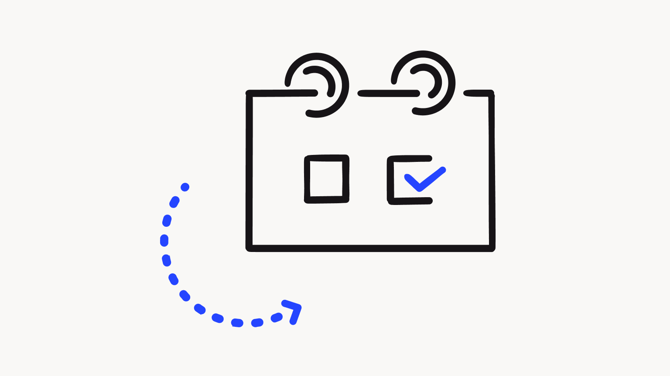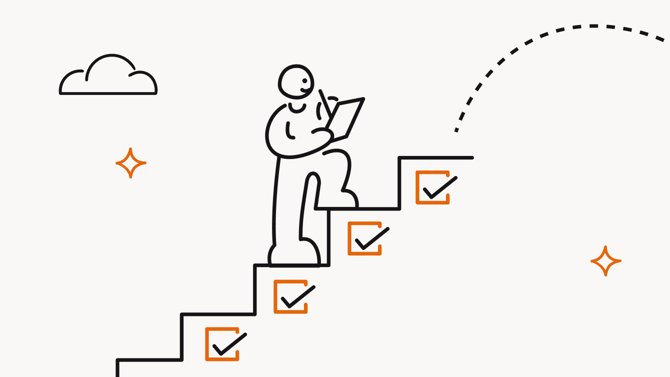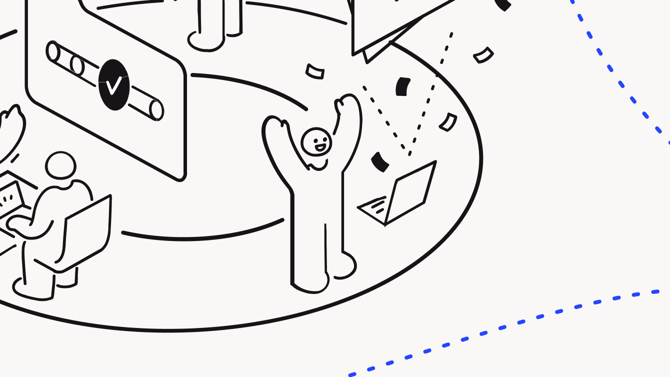Streamline, organize, and automate your onboarding process like magic.
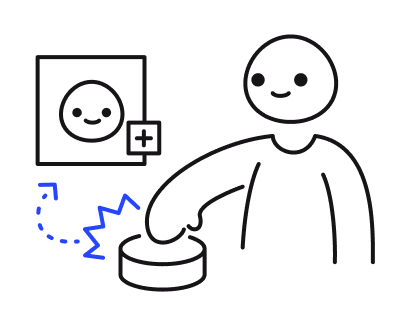
What's in this article
Onboarding is the practice of welcoming newcomers—new employees or existing employees transitioning to new roles—and making sure they are connected to the right people, knowledge, tools and spirit so they can fit right in.
And while every company has their own method, great onboarding begins with collaboration and should be easy to set up, easy to use and easy to use again. And makes sure new hires feel welcomed and empowered from day one.
Employee Training and Onboarding: Same Thing?
While training can occur during onboarding, training and onboarding are not the same thing.
Training covers the knowledge needed to complete the technical aspects of a job, like how to use a specific software or acquire a skill. Onboarding covers the knowledge needed to integrate a new team or new company, from understanding the corporate values to getting to know the people.
What Are the Benefits of Employee Onboarding?
Great onboarding experiences benefit employees across the board—from engagement, advocacy, retention and performance. So if you’re looking at the big picture, onboarding supports a company’s bottom-line in the long run too.
More companies now understand the importance of cultivating company culture, spirit and values. First impressions matter. And the first impression newcomers have with your company spirit and values is through onboarding. That’s why it’s important to make this first impression a positive one.
Even at the earliest stages, onboarding is meant to set up newcomers on the right foot so they can reach their full potential as fast and as seamlessly as possible, while fostering engagement towards their company and their peers.
Yes, there is always a learning curve for any new hire, and a strong onboarding experience should help smooth out this curve. But don’t take it from us, just ask the scientists—studies show that up to 17% of employees leave within the first three months and up to 30% leave within the first six months, citing poor or ineffective onboarding as the most common reason for early departure from a job.
17%
of employees leave within the first three months
30%
of employees leave within the first six months
The employee's first day at a new job feels like the first day of school—exciting coupled with a willingness to jump right into the action.
Unfortunately, many newcomers feel left out when starting a new job, being given an underwhelming onboarding experience that doesn’t make them feel welcomed or useful. Not a great feeling.
People who feel the most connected to their place of work have higher employee engagement towards their job. Based on findings by Gallup, highly engaged teams show 21% greater profitability. Less absenteeism and lower turnover rates means better ROI for every dollar invested in training new hires.
Who Is Involved in Employee Onboarding?
Most tend to think that onboarding falls only into the hands of HR managers because they are the ones hiring the employees joining the company.
If you think onboarding is just an Human Resource thing, you are doing it wrong! Onboarding should involve and connect a variety of people: from managers, to IT, to other departments, to peers. It is even more true for remote onboarding.
HR managers and team leaders should work hand-in-hand to build a comprehensive onboarding experience, with clearly laid-out steps so newcomers are given a strong sense of direction.
Peers—especially the ones part of the newcomer’s core team—should be invited to help support some aspects of onboarding.
The IT department should be involved to order and set up the right equipment or software in preparation for the new hire’s first day.
Directors and department leaders should take the time to arrange a meet-and-greet or one-on-one lunch, enhancing the first impressions of a caring, supportive and inclusive work environment.
Something worth noting: while onboarding may seem second nature to HR managers, this may not be the case for other types of managers. Ceridian recommends giving key employees onboarding courses so everyone can know how to help build engaging and effective onboarding experiences.
What Is Needed To Create Great Onboarding?
While each company has its own way of doing things, there are key elements that are important to consider when building stand-out employee onboarding programs:
- Onboarding Timeline: Mapping out the different stages and milestones of onboarding experiences provides structure and offers a clear guideline as to what to do and when, following best practices, considering key stages including pre-boarding, the first day, the first months, and the first year.
- Key Milestones: As with any good business practice, every action should meet an objective and every objective should be time-bound. Key milestones should be identified to ensure that assigned tasks are serving the newcomer and that performance can be measured.
- The Right Templates: Cohesiveness is so important. Solid but flexible templates to help build personalized onboarding experiences will save time, ensuring key elements are not forgotten and can be used company-wide.
- Complementary Documents: A well-prepared onboarding includes documents from corporate guidelines to an employee handbook.
- Realistic Expectations: According to RecruitShop, it takes between one to two years for a newcomer to realize their fully-onboarded potential and maximized productivity. To expect for a new employee starting to work at 100% productivity right off the bat is wishful thinking, and continued and long-term support is key for new hires to get up to speed quickly.
What Are the Stages of Great Onboarding?
As mentioned in the onboarding timeline, the key stages of the onboarding process consider the pre-boarding stage, the first day, the first months, and the first year, which should include periodic progress reports and personal check-ins throughout:
Pre-boarding
Onboarding starts as early as the first point contact, with an opportunity to set the tone of the company values and spirit, and build a good rapport during early communications. Once an employee is hired, it is important to share a clear procedure and path before the start of the employment.
The First Day
This stage sets a crucial tone for the employee experience, which includes many factors such as the orientation process, meet-and-greets and setting up the newcomer with the right tools and equipment.
Psst! 👀 One of the favorite activity of our employees is watching the welcome videos recorded by their colleagues!
The First Few Months
Usually broken down at the three and six-month mark, this stage relies on providing an appropriate organized task list and setting clear expectations for the coming months. Providing support, training tools, and mentoring continues to be essential throughout these first months.
The First Year
Reaching the one-year milestone is an important one, as it is a strong indicator of having fostered solid employee engagement with the newcomer, ensuring employee retention. Still, it is important to keep an honest dialogue between new hires and managers, and to continue to provide ongoing support where needed. Usually, quarterly and/or yearly performance reviews fall within this stage, whether through formal or informal one-on-ones.
Onboarding: The Key Takeaways
Onboarding is largely layered and considers both the recruitment and hiring stages, the employee life cycle, as well as tactics to foster company culture and employee engagement, requiring teamwork, good planning and a structured approach.
That said, providing full and genuine onboarding experiences is beneficial all around regardless of an organization’s size, and the time and efforts spent in mapping out onboarding timelines, checklists and templates are well worth the investment.
Find our essential onboarding checklists to help build full and genuine onboarding experiences.
Structure and automate your onboarding journey so newcomers hit the ground running.
